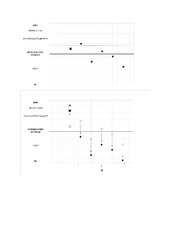| dc.contributor.author | Moritz, Steffen | |
| dc.contributor.author | Ludtke, Thies | |
| dc.contributor.author | Pfuhl, Gerit | |
| dc.contributor.author | Balzan, Ryan P | |
| dc.contributor.author | Andreou, Christina | |
| dc.date.accessioned | 2018-04-27T07:34:47Z | |
| dc.date.available | 2018-04-27T07:34:47Z | |
| dc.date.issued | 2017-03-30 | |
| dc.description.abstract | Positivsymptome wie Wahn und Halluzinationen stellen definierende Symptome
einer (schizophrenen) Psychose dar. In dieser Übersichtsarbeit wird
ein 2-stufiges heuristisches Modell für die Entstehung und Aufrechterhaltung
psychotischer Positivsymptome vorgelegt. Im Kern der Theorie steht
die Hypothese, dass von Psychose betroffene Menschen eine erniedrigte
Entscheidungsschwelle aufweisen, die zu einer frühzeitigen Annahme von
Hypothesen führt (liberale Akzeptanz). Im Unterschied zu nichtpsychotischen
Personen ist die Konfidenz in falsche Urteile bei Betroffenen, als
Folge dieser liberalen Akzeptanz, erhöht. Postuliert werden 2 Stufen der
Wahnentwicklung. Auf Stufe 1 (Wahnentstehung) ist die subjektive Wahrscheinlichkeit
für akzeptierte Hypothesen bei Menschen mit Psychose zunächst
vergleichsweise gering. Wahnhafte Ideen sind in diesem Stadium
häufig nicht voll entfaltet bzw. fragil und können zwischen 2 sich gegenseitig
ausschließenden Ansichten oszillieren («doppelte Buchführung»). Im
Zuge der 2. Stufe (Überzeugung, Aufrechterhaltung) verfestigen sich die
flüchtigen wahnhaften Ideen zu falschen Überzeugungen aufgrund eines
2-gliedrigen Konsolidierungsprozesses – indem einerseits Gegenbeweise
ignoriert und andererseits Belege zugunsten der Leithypothese einen Verarbeitungsvorteil
erhalten (Bestätigungstendenz). Alternative Hypothesen rü-
cken in den Hintergrund. Aufrechterhaltend für eine Wahnidee sind vielfältige
psychologische Faktoren und Motive, wie die Kongruenz des Wahns mit
dem emotionalen Befinden, persönliche Bedeutsamkeit und die temporäre
Steigerung des Selbstwertgefühls sowie das Spannen eines Erklärungsrahmens
für ein breites Spektrum von Beschwerden zur Reduktion kognitiver
Dissonanz. Aus unserer Sicht können viele Formen von Halluzinationen und
Erstrangsymptomen (z.B. Gedankeneingebung) ebenfalls durch liberale Akzeptanz
erklärt werden. Diese Symptome basieren unseres Erachtens nicht
zwingend auf fehlerhaften oder abnormalen Wahrnehmungen, sondern repräsentieren
eine Fehlinterpretation von (teilweise) normalen sensorischen
Phänomenen, die sich von einem (normalen) «Als-ob»-Gefühl bis hin zu
einer wahnhaften Überzeugung steigern. Im Einklang mit dem erläuterten
Modell werden Positivsymptome durch Interventionen wie das metakognitive
Training (MKT) verringert, die Betroffene dazu anhalten, mehr Informationen
zu sammeln und ihre Urteilssicherheit zu reduzieren (Säen von Zweifel).
Die antipsychotische Wirkung von Antipsychotika/Neuroleptika wird im
Rahmen der Theorie zum Teil durch ihre Eigenschaft erklärt, Zweifel zu induzieren.
Die Bedeutung der Emotionsregulation bei der Reduktion von Positivsymptomen
wird ebenfalls aufgezeigt, und zukünftige Forschungsrichtungen
sowie offene Fragen diskutiert. | en_US |
| dc.description.abstract | Liberal Acceptance as a Cognitive Mechanism in Psychosis:
A 2-Step-Therory on the Pathogenesis of Positive Symptoms in
Schizophrenia
Positive symptoms, such as delusions and hallucinations, are defining features
of psychosis and schizophrenia, respectively. In this review article,
we present a 2-stage heuristic model for the formation and maintenance
of psychotic positive symptoms. At the heart of our theory is the assumption
that individuals with psychosis have a lowered decision threshold resulting
in the liberal acceptance of hypotheses. In contrast to non-psychotic
persons, confidence in errors is enhanced as a result of liberal acceptance.
Two stages are put forward here. At stage 1 (delusion formation),
the subjective probability of an accepted hypothesis is relatively low. Delusional
ideas at this stage are often fragile and may oscillate between mutually
exclusive views (‘double book keeping’). During the 2. stage (conviction,
maintenance), flighty delusional ideas crystallize due to a 2-fold consolidation
process: a) counter-evidence is ignored and b) cues in favor of
the dominant hypothesis have a processing advantage (confirmation
bias). Alternative hypotheses are degraded in the course of this process. A
number of psychological factors and motifs act as maintenance factors, for
example the congruence between the delusion and present emotional
states, personal importance and the temporary elevation of self-esteem, as
well as a superstructure that may explain a broad range of impairments to
reduce cognitive dissonance. From our point of view, some forms of hallucinations
and first-rank symptoms (e.g., thought broadcasting) can be
explained by liberal acceptance as well. These symptoms are not necessarily
based on erroneous or abnormal perception but on the misinterpretation
of (partially) normal sensory phenomena which evolve from an ‘as
if’ feeling to delusional conviction. In accordance with the model, positive
symptoms are decreased by interventions such as metacognitive training
(MCT) which encourage individuals with psychosis to search for more information
and to reduce their level of certainty (i.e., ‘sowing the seeds of
doubt’). The antipsychotic properties of antipsychotics/neuroleptics are
explained by their potential to induce doubt. The role of emotion regulation
for the amelioration of positive symptoms is demonstrated, and further
research directions and open questions are outlined. | en_US |
| dc.description | This is the peer-reviewed but unedited manuscript version of the following article: Moritz, S., Ludtke, T., Pfuhl, G., Balzan, R. P. & Andreou, C. (2017). Liberale akzeptanz als kognitiver mechanismus bei psychose: Eine 2-stufen-theorie der pathogenese schizophrener positivsymptome. Verhaltenstherapie (Basel), 27(2), 108-118. http://doi.org/10.1159/000464256. The final, published version is available at <a href=http://www.karger.com/?doi=10.1159/000464256> http://www.karger.com/?doi=10.1159/000464256. </a> | en_US |
| dc.identifier.citation | Moritz, S., Ludtke, T., Pfuhl, G., Balzan, R. P. & Andreou, C. (2017). Liberale akzeptanz als kognitiver mechanismus bei psychose: Eine 2-stufen-theorie der pathogenese schizophrener positivsymptome. Verhaltenstherapie (Basel), 27(2), 108-118. http://doi.org/10.1159/000464256 | en_US |
| dc.identifier.cristinID | FRIDAID 1402334 | |
| dc.identifier.doi | 10.1159/000464256 | |
| dc.identifier.issn | 1016-6262 | |
| dc.identifier.issn | 1423-0402 | |
| dc.identifier.uri | https://hdl.handle.net/10037/12630 | |
| dc.language.iso | ger | en_US |
| dc.publisher | Karger Publishers | en_US |
| dc.relation.journal | Verhaltenstherapie (Basel) | |
| dc.rights.accessRights | openAccess | en_US |
| dc.subject | VDP::Samfunnsvitenskap: 200::Psykologi: 260 | en_US |
| dc.subject | VDP::Social science: 200::Psychology: 260 | en_US |
| dc.title | Liberale akzeptanz als kognitiver mechanismus bei psychose: Eine 2-stufen-theorie der pathogenese schizophrener positivsymptome | en_US |
| dc.type | Journal article | en_US |
| dc.type | Tidsskriftartikkel | en_US |
| dc.type | Peer reviewed | en_US |


 English
English norsk
norsk
